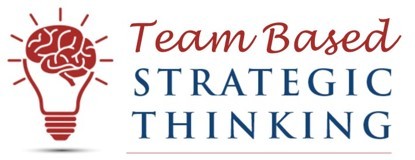Leadership Competency Frameworks Are A Waste Of Time (#9 Article)
Leadership competency frameworks are by definition an artifact of ordered simple and complicated domains that Snowden describes. Complicated environments are a puzzle to be solved. The solution will be found by the application of logic and analysis. There is one right answer, one best way of doing something. In the leadership development space this gets codified as a competency framework.
Most progressive organisations today are using these leadership competency models to outline the key skills and behaviours they want to see in their supervisors, managers, and executives. Leadership competency models purport to provide a structured framework for defining and developing those behaviours that have the biggest impact on an organisation’s performance. Apparently if used effectively, they become a road map to dramatically higher leadership effectiveness.
There is simply no data to link investment in leadership competency frameworks to business results. Now I know that for a lot of you reading this I have just uttered heresy. A leader impacts the culture that clearly has an impact on performance, you say! And I agree. However there is no data that suggest investment in competency frameworks actually improves leadership! There is a decades-long history of failed organisation initiatives.
Dozens of studies have shown that 50% to 70% of organisation improvement initiatives like customer service, leadership development, performance management systems, restructuring, quality improvement, etc. have failed. The implementation of leadership competency models is clearly heading toward that same cliff.
In his article Leadership Competency Models: Why many are failing and how to make them flourish, Jim Clemmer identifies six reasons many leadership competency models are failing. Here are the first three:
- Pulling the competencies out of thin air.
A typical standard process is to get a group of senior managers together in a workshop and have them select 6 to 16 competencies from a deck of 80 odd cards that they think are required for the future success of the organisation. Then there is the blizzard of Post-It note approach when senior managers self-define the competencies and then with a skilled facilitator pair them down to the Top 10 or so that are considered most relevant.
Now if it is not self-evident of the issues in the above two approaches, let me spell them out. First, you are assuming that these senior managers actually are great leaders and competent to define the leadership framework. Next, and closely related, you will have an overconfidence bias clearly in play. They actually believe that they have the ability to define the leadership competencies required for future success based on prior experience.
As we know from #2 Article, this experience and expert opinion cannot be relied upon in a complex world!
Finally and typically, these exercises are done in isolation of the future strategy and current culture of the organisation and tend to gravitate to the HR consultant’s academic view of leadership excellence disconnected to any reality of the business environment. There is never any attempt to link these frameworks upfront by design to delivering improved business results.
Clemmer outlines in Leadership Lessons from Evidence-Based Medicine, what’s missing is proof that these competencies matter to the organisation. He states: “Where is the empirical data that these are the key behaviours that have the greatest impact on employee engagement, attraction and retention, customer service levels, quality, innovation, safety, productivity, sales, and profits? How do we know we have the right competencies?”
- Is it a Bird, Is it a Plane, no…It’s SuperLeader!
Many leadership competency models provide a series of behavioural descriptions clustered around 6 to 16 or more headings. If they’re relevant and well written, the descriptions are very helpful. What’s implied is that the pathway to peak performance is improvement across dozens of skills and behaviours. This pathway to perfection is overwhelming and completely unrealistic.
At best, leadership development that’s a mile wide and an inch deep moves a leader from good to a bit better. More often, motivation to develop and follow a personal development plan to become SuperLeader fizzles out and crashes.
- One Size Fits All
Most competency models weigh all the competencies and dozens of underlying behaviours equally. Some models layer the competencies across organisational levels starting with front-line staff, and moving up to supervisors, managers, and executives. This SuperLeader model doesn’t account for vast variances in individual preferences across leaders or their widely differing functions.
Each of us mere mortals is a unique mixture of strengths and weaknesses. Where is the empirical data that these are the key behaviours that have the greatest impact? How do we know we have the right competencies?
We have work areas that play to our passions and turn us on and areas that are a real chore and turn us off. One-size-fits-all competency models don’t account for those differences. For example, a supervisor, manager, or executive in accounting or IT will have a very different set of competencies and passions leading to their successful leadership than someone in sales or customer service.
Competencies such as analytical and problem solving or technical/professional expertise versus those of communication or building relationships take on a different weight for each role. And each competency plays quite differently to the natural strengths and weaknesses of each leader and the personal preferences that motivated him or her to choose their field or profession.

